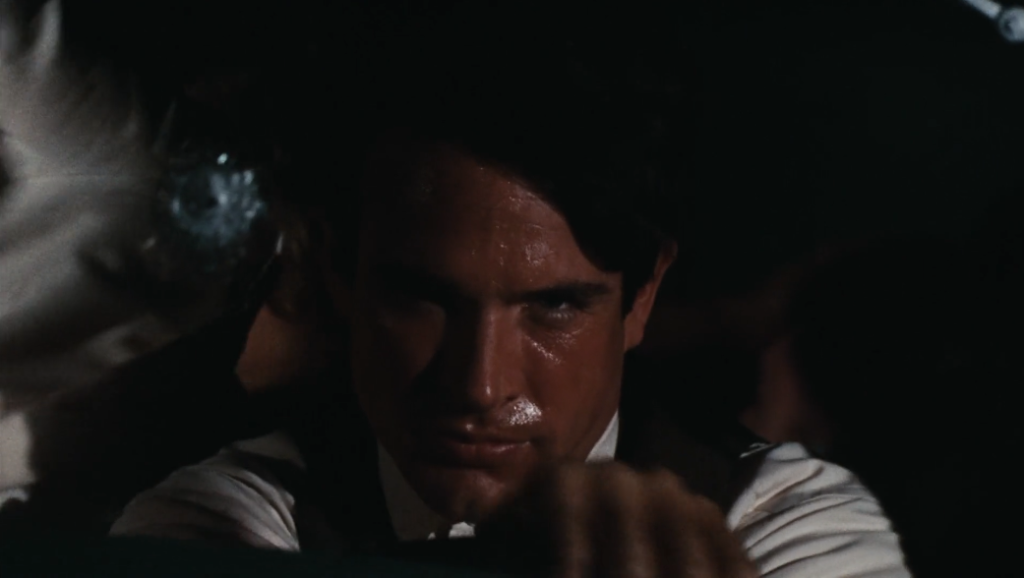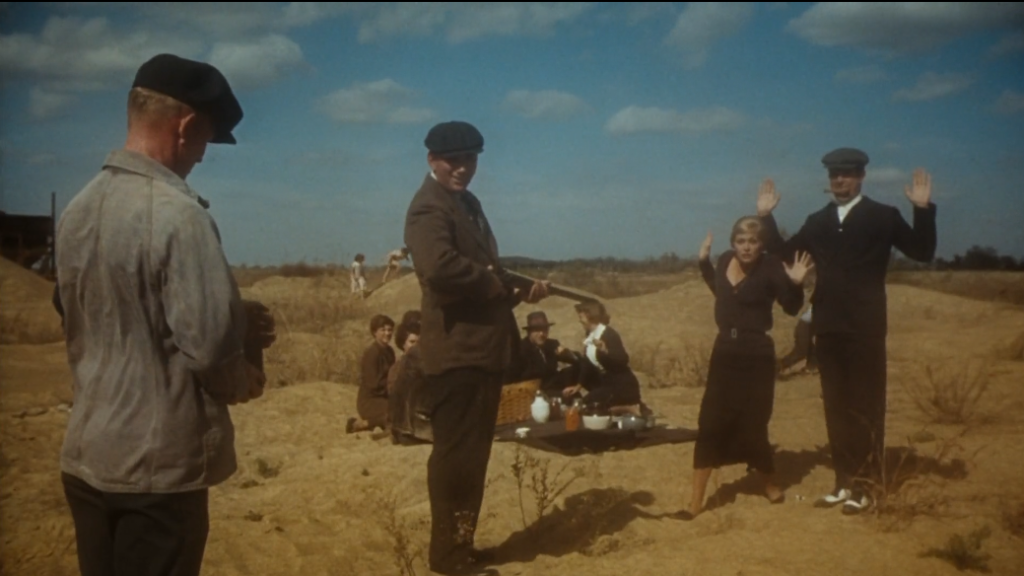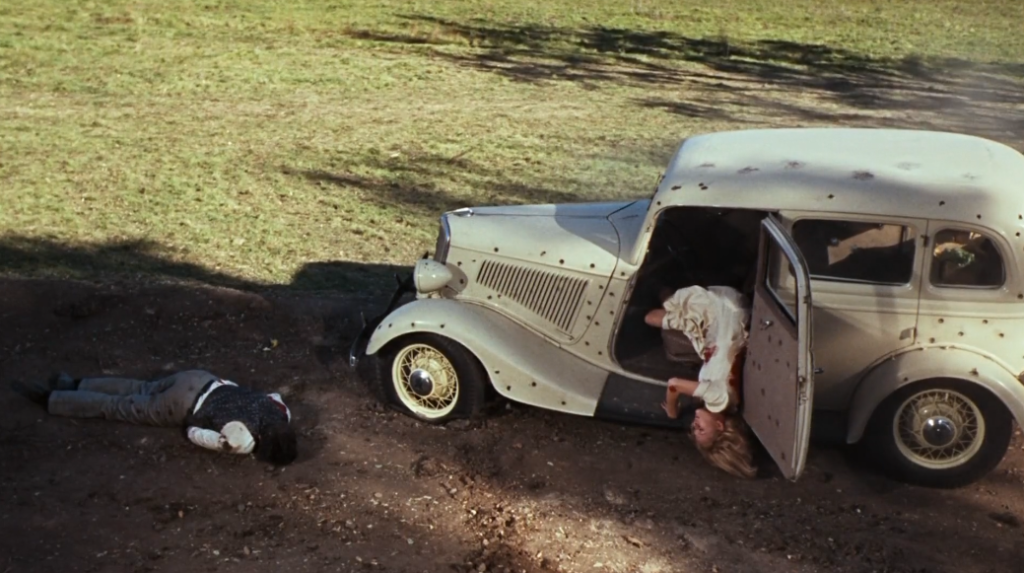New Hollywood: new film makers working with new influences. a revolution of the old way of making films.
Four films from this period:
Easy Rider: Dennis Hopper (starring Dennis Hopper, Peter Fonda and Jack Nicholson)
The Graduate: Mike Nichols (Starring Dustin Hoffman and Anne Bancroft)
Midnight Cowboy: John Schlesinger (Starring Jon Voight and Dustin Hoffman)
The Wild Bunch: Sam Peckinpah (Starring William Holden, Ernest Borgnine and Warren Oates)
Events taking place in America and elsewhere:
Vietnam war– Young people protesting the war in Vietnam because many Americans where dying. They where asking for them to take the Americans out of Vietnam, who went there to stop the spread of communism.
Riots in the Ghettos– People fighting against racial inequality, neighborhoods being set on fire.
Political assassinations– Martin Luther king and JFK’s Brother where shot. JFK’s brother was at the time running for president
Political Disgrace– President Nixon had to resign because he was discovered to be behind a burglary where bugs where being planted in the Democrat’s Office.
All of these created a very violent image of America that was being shown to the American public on their Televisions.
USA Counter culture– where the younger people began to become a lot more liberal, being more accepting of people and advocating for peace. This included more accepting of things like drugs and sexual liberation as well as advocating for women’s rights and respecting sexuality.
- What is meant by French New Wave Cinema?
a movement that took place from late 50s to late 60s. The style is very experimental because it encouraged the rejection of the film making conventions Hollywood had at the time. They would often feature existential themes and different approaches to the way the film was constructed using its editing, narrative and visual style. Was meant to be experimental. French cinema was very literal, these French films worked against that. Most of the people making these experimental films where young people, who where often film critics who decided to make the films they wanted to see rather than the mainstream films of the time. Wanted directors to be credited rather than the studios, making directors the stars rather than the actors. They are the artistic driving force. Working with low budgets because of financial restraints of post ww2 France.
2. The Cinematography had a much more documentary approach, letting the camera run for a longer time so the audience can see their character more through actions. The films relied a lot more heavily on natural lights and real sets, which would allow for more movement from the actors as they would not have to worry about changing the lighting as they moved. The camera where often handheld and the actors they hired where not always professionals in the field, who would be improvising things like their blocking and dialogue, all this came together to go against the conventions and expectations of the current studio climate. The lower budget allowed more people to make films rather than just big studios. Natural locations and lighting allowed for there to be a smaller team of crew, therefore less people to pay. Jump cuts where used to signify the passage of time. The camera would stay in the same place but the camera would cut. A voice over is used in French New Wave films quite a lot. They can be used to show a characters inner monologue.
3. Arthur Penn was influenced by directors like François Truffaut and Jean-Luc Godard. Bonnie and Clyde itself is a rejection of the tropes of Hollywood at the time, this is shown by the fact it wasn’t well liked by the Higherups at Warner Brothers when Penn first showed them the film, them not understanding it. So by having it take this more alternative approach to the cinematography and narrative would lend itself to the story he was trying to tell. Bonnie and Clyde is a character study of the two characters, it is historically based. Bonnie and Clyde takes from French New Wave in the aspect of their music, in the cars there is very lively music playing, often being blue grass music, the main instrument being a banjo that was being played very fast. The narrative is not always clear. There is a lot of mood changes.
3 scenes from Bonnie and Clyde that have stylistic features that have been influenced by French New Wave films:
1.
The scene where they are driving away after buck got shot. it is a lot of close ups on the characters as they drive which is a convention of the French New wave movement. this helps convey their emotions better to the audience.

2.
This is used throughout the movie, but Bonnie and Clyde was not shot on a pre-built set/sound stage. It utilized real locations for its backdrops rather than ones made by people to fit the scene. This is also a convention of the French New wave movement, due to most of the movies made during this era didn’t have the budget to have a set to film on.

3.
The final scene is very snappy, cutting between Bonnie and Clyde with extreme close ups, this is done to show their expressions better and convey their emotions to the audience better. This is a convention of the French new wave movement because it helps audience be aware of the fact they are watching a movie, something Classic Hollywood strayed away from, but French New wave embraced and set out to do.

New Hollywood Style:
1. How did new wave Hollywood directors like Penn approach Film narratives?
Plot that changes perspective, endings that aren’t always happy (usually ambiguous or sad) and more violent than others of the time. A lot of the acting was done by amatures and may have been improvised. Some of these aspects can be seen in Bonnie and Clyde, where Penn tackles a more taboo subject matter. while there is a story, the film is much more character driven than story driven, which makes the audience sympathize with two murderers. This goes against the Classic Hollywood style of Storytelling by not sticking to a strict linear structure. There is also focus on sexuality, though Bonnie and Clyde’s relationship and their struggles, which was also a taboo for the time period.
2. what is Discontinuity editing?
a style of editing that is used to draw attention to itself, it can be used to remind the audience is watching a movie. This will give the cut/shot an unnatural feel, which is often used in French New Wave cinema. This can be to draw the audience’s attention to an action, sound or place.
3. why is this time in film production sometimes referred to as ‘The Rise of the Auteurs’ in Hollywood?
The word ‘Auteur’ comes from the French word for author. directors where being referred to as Auteurs because they where viewed as the movies author rather than the screenwriter having that credit, showing that these movies where personal rather than product films. Many of these directors of the time had come from magazines where they would review films. not seeing any that they liked or connected with, they came to the conclusion that studios where ‘out of touch’, so they would go on to create movies that they wanted to see.
4. What is the lasting impact of the New Hollywood style on modern films?
Directors have become much more credited and are now a marketing tool like actors, having their names on the posters or advertising for a movie. More gritty movies have become mainstream rather than being something taboo. as well as this, the more experimental camera work of the time can be seen in directors such as Wes Anderson, who often uses the technique of having a character look directly down the camera lens, which can break the audiences immersion in a film, reminding them they are watching a film.